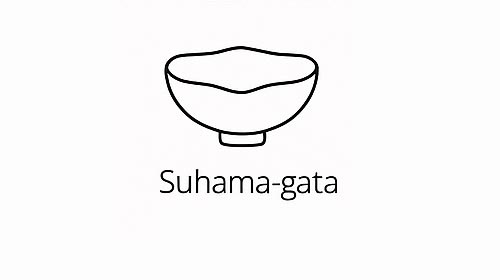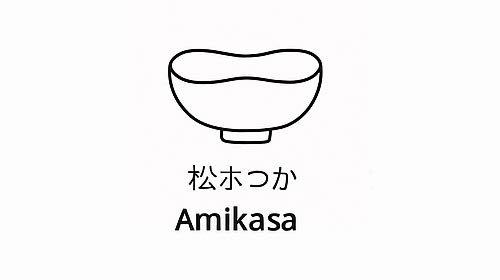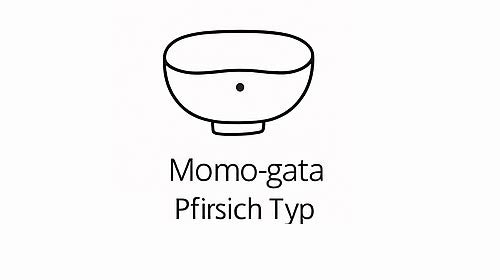The Suhama-gata chawan is a poetic vessel. In Japanese landscape design, "Suhama" (州浜) refers to an artificially created coastline—with a flat, curved shoreline and changing contours. This idea has been applied as a design feature to a special type of matcha bowl: the bowl with the natural, asymmetrical rim .
It is like holding a piece of landscape in your hand – an invitation to contemplate and to treat form, space and tea with care.
Shape & Characteristics
The Suhama-gata is characterized by a slightly irregular rim , reminiscent of a coastline. In contrast to the perfect circular shape of many chawan, it possesses a subtle asymmetry , often with a slight "indentation" or "breakout" in one spot.
The body is rather shallow to semi-deep, with open walls. This organic irregularity gives it a natural, almost random appearance—as if wind and water had shaped the bowl.
Origin & Meaning
The form probably originated in the late Edo period , inspired by gardens of aristocratic residences in Kyoto, where “Suhama” served as a stylistic element for the design of pond banks or dry landscapes.
The transfer of this idea to the matcha bowl arose from the desire to express the connection to nature not only in the tea itself, but also in its vessel.
Suhama-gata chawan were often used in summer or late spring ceremonies where greater proximity to the outside world, warmth and water was sought.
Materials & Glaze
This form is particularly suitable for more freely designed firing processes , for example in:
-
Bizen ware with natural ash glaze
-
Shino and Ki-Seto styles with sand-colored and cream-white glazes
-
Modern ceramics with textured surface or edge accent
The glazes usually emphasize the irregularity and imperfection—in the spirit of wabi-sabi . Some Suhama bowls also feature deliberate cracks, asymmetrical kodai, or rolled edges.
Function & Practice
Suhama-gata chawan are particularly suitable for usucha , as the wide interior facilitates cracking. The gentle asymmetry provides a gentle directional guide to the act of drinking —the guest automatically leans toward the open side.
Typical deployment moments:
-
Ceremonies with a strong connection to nature
-
Summer settings , also outdoors
-
In combination with Chabana from grasses, ferns or coastal flowers
Symbolism & Effect
Suhama-gata represents openness, change, and the beauty of imperfection . It evokes a coastline, erosion, tides—that which passes and returns.
In the tea path, it symbolizes the gift of irregularity : it invites us to honor the fleeting, to appreciate the imperfect.




Leave a comment
This site is protected by hCaptcha and the hCaptcha Privacy Policy and Terms of Service apply.